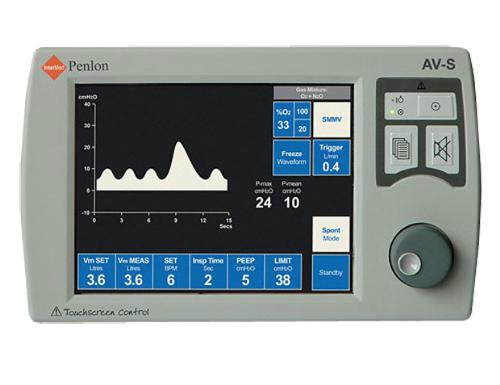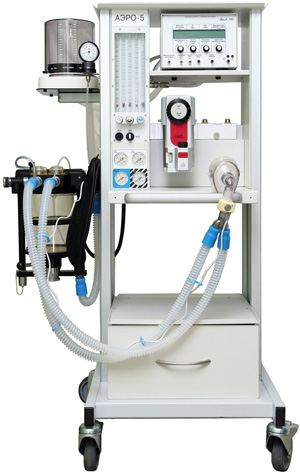Categories
Anesthesia Ventilator: Certified Means Of Lung Ventilation

Artificial lung ventilation (ALV) provides gas exchange between environment air (or a mixture of gases) and lung alveoli. It is used as a reanimation tool in case of a sudden respiratory arrest, as a component of anesthesia, a means of intensive therapy of acute respiratory failure and some diseases of nervous and muscular systems.
Anesthesia ventilator is a part of the operational unit equipment in any modern clinic and is used during surgical operations of increased complexity. It provides monitoring of patient’s breath, improves oxygen delivery into the body and excretion of carbon dioxide. The ventilator can be applied with all types of facilities for inhalation narcosis; it can also minimize unwanted complications during surgery. An anesthesiologist can qualitatively monitor patient’s breath and state as well as respond to any changes during the surgical interference. The device is especially valuable when carrying out long-term operations: in combination with inhalation narcosis even the most difficult operations are withstood much easier by patients, it helps to decrease the risks of anesthesia.
Jet Ventilation Anesthesia
Jet ventilation is carried out through a tracheal airway or a tracheostoma (the inflow of atmospheric air into breathing passages is carried out simultaneously), through a catheter, which is pulled into a trachea through the nasal passage or by puncturing. The latter is important in the situations with no conditions for implementation of intubation. Artificial lung ventilation can be performed in an automatic mode, but this is permissible only in cases where patient’s spontaneous respiration is completely absent or suppressed by drugs (neuromuscular blocking agents). High-speed air flow entering the lungs is a peculiarity of radiofrequency jet ventilation. It allows providing the hydration of inhalant gas mixture without damaging the ciliary epithelium and expectoration formation.
The device of radiofrequency jet lung ventilation is a hardware system providing artificial respiration for the patient with a frequency that exceeds the normal frequency of respiratory movements by 4 times. Such kind of devices is widely used in ENT surgery, thoracic restorative, cardiac surgery and many other situations with a risk of lung tissues injury. The apparatus possesses a built-in system of gas mixture heating and a built-in roller-humidifier (installation: 0-100 % of humidification without losses in the breathing circuit).

One Lung Ventilation Anesthesia
Such kind of anesthesia provides many advantages for the surgeon and the patient during chest operations. The ventilation is conducted with the examinee in a lateral position; notions ‘independent lung’ and ‘dependent lung’ reflect, correspondingly, a collapsed lung and a normal lung that is being ventilated. It is possible to mark out 3 periods of ventilation: ventilation in the dorsal position, ventilation in the edgewise position and one lung ventilation. In the process of ventilation in the lateral position a dependent lung receives up to 60% of blood flow because of gravitational forces, but only 40% of respiratory volume. When conducting one lung ventilation all respiratory volume enters the dependent lung. As a result, the blood flow in the independent lung (40% of overall volume) is down by 50% through the mechanism of hypoxic pulmonary vasoconstriction. It means that 20% of the blood flow is still going through the collapsed lung.



